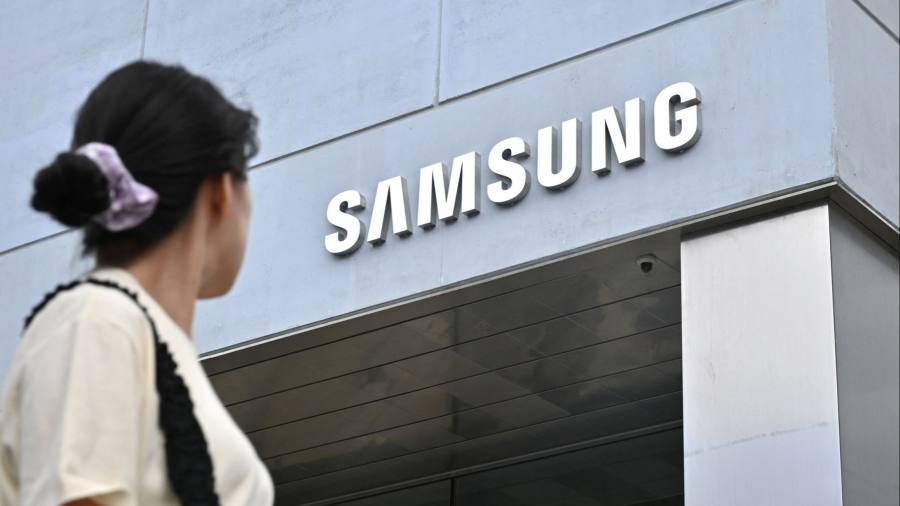Receive free Samsung Electronics Co Ltd updates
We’ll send you a myFT Daily Digest email rounding up the latest Samsung Electronics Co Ltd news every morning.
Samsung Electronics has estimated its second-quarter operating profit plunged 96 per cent to the lowest in 14 years as memory chip prices continue to fall due to oversupply despite production cuts.
However, the price decline has slowed as Samsung joins its rivals in cutting chip supply. Analysts expect chip prices to bottom out in the current quarter and stage a recovery next year.
“We believe the worst quarterly loss from the semiconductor business was in the first quarter of 2023,” said Goldman Sachs analyst Giuni Lee in a report, forecasting that Samsung’s chip division would swing to a small profit in the fourth quarter.
Samsung shares fell 2 per cent on Friday morning after gaining nearly 30 per cent year to date on expectations of the industry recovery. The company will announce detailed second-quarter results this month.
The preliminary earnings were announced after US rival Micron Technology gave an upbeat forecast for the three months ending on June 1, in another indication the supply glut was easing. Micron said last week that the worst was over, while SK Hynix executives have also anticipated a recovery this year driven by demand for artificial intelligence.
Operating profit at Samsung, one of the world’s biggest makers of microchips, smartphones and TVs, is forecast to decline to about Won600bn ($460mn) in the April-June quarter from a Won14.1tn profit a year earlier. It was slightly better than the Won555bn forecast by Refinitiv SmartEstimate. Sales fell 22 per cent to about Won60tn.
The sharp fall was led by its chip division, whose losses were estimated by analysts at about Won3tn-Won4tn. Prices of DRam chips used in smartphones, PCs and servers are forecast to fall up to 5 per cent in the current quarter after dropping as much as 18 per cent in the second quarter, according to market researcher TrendForce, as customers work through excess inventories.
“Samsung’s DRam shipments are exceeding previous estimates and chip inventories are falling fast so we expect its cost structure to improve quickly,” said Kim Dong-won, an analyst at KB Securities.
Faced with the protracted industry slump, Samsung is trying to capitalise on the booming artificial intelligence market. AI-enabling servers require at least four to six times more DRam capacity, according to Goldman Sachs, and Samsung is working to boost its output of those chips.
Kyung Kye-hyun, Samsung’s executive in charge of the semiconductor business, told employees this week that the company’s share of high-bandwidth memory chips used in AI was exceeding 50 per cent of the fast-growing market.
But Kim Un-ho, an analyst at IBK Investment & Securities, cautioned that the inventory glut could slow the industry’s recovery. “AI chip demand will continue to increase, but we continue to see a decline in demand for PCs and smartphones,” he said. Kim added that significantly more production cuts were needed for a chip price rebound this year.
Samsung is expanding its capacity for contract manufacturing — producing chips for other companies — to catch up with bigger rival Taiwan Semiconductor Manufacturing. Samsung plans to introduce cutting-edge 2-nanometre production of mobile chips by 2025.
Samsung’s chip losses were offset by its mobile division’s profits, estimated by analysts at about Won3.3tn, after the company pared back marketing costs.
Samsung is planning to unveil its latest foldable smartphones this month in Seoul, weeks earlier than usual, to increase its share of the premium phone market before Apple launches its next iPhone.
Read the full article here





